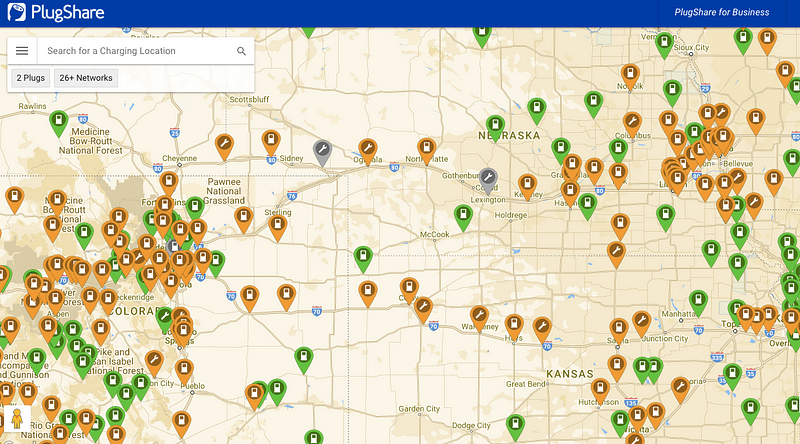Electric Vehicle Infrastructure: The Road Ahead for Kansas
Written on
The Challenge of Electric Vehicle Travel
At the start of this year, I embarked on a journey from Virginia to Colorado in my compact electric vehicle, a 2020 Nissan LEAF. The trip spanned six days, largely due to two malfunctioning chargers that forced me to charge overnight. This upcoming Labor Day weekend, I plan to make the reverse trip from Colorado to Virginia, aiming for a record of four days, though I doubt this will be achievable.
The Nissan LEAF, however, wasn't engineered for long-distance travel, and similarly, the current electric vehicle charging network across the U.S. isn't tailored for cars like mine. Presently, the charging infrastructure is primarily designed for vehicles boasting over 240 miles of range. There are too many bottlenecks along major routes, particularly in states like Kansas and Nebraska. A single malfunctioning fast charger can extend a cross-country journey by a day or more, depending on the vehicle and the distance to the next operational charger.
Take a look at the charger distribution shown below on the PlugShare website between Denver and Kansas City or Lincoln. There are only two feasible routes, both cluttered with wrench symbols that signify a high chance of encountering a non-functional fast charger. While some wrench symbols indicate upcoming chargers, which is encouraging, we still require additional options.

A Closer Look at Charger Reliability
The wrench symbols reflect only those chargers that PlugShare has identified as problematic. There are instances where chargers appear functional on the app, yet they fail upon arrival. For example, there are four wrench symbols between Cheyenne and Lincoln, as well as another four between Denver and Kansas City. Some of these symbols suggest future charging stations, but one cannot rely on a 100% operational status in Kansas and Nebraska. Achieving that level of reliability would demand near-total uptime, which is impractical, underscoring the necessity for more fast chargers and better redundancy.
My chances of reaching Virginia in my electric vehicle within five days are slim. Additionally, there’s a significant risk that the few hotels equipped with Level 2 chargers might be occupied when I arrive, potentially adding another two days to my journey if I encounter a broken fast charger.
While federal funds for infrastructure are forthcoming, it will still take months before we see dependable fast charging options in rural America. The need for reliable electric vehicle charging infrastructure in these areas, especially in the less populated states, is urgent. Moreover, timely maintenance of fast chargers is crucial, particularly in rural regions. Without a consistent and redundant electric vehicle charging network throughout rural America, the idealized notion of a Great American road trip will face serious challenges.
Chapter 1: The Current Landscape of Electric Vehicles
The first video examines the challenges faced by electric vehicles in the market, highlighting the struggles of sales and consumer adoption, reflecting the sentiment of "Go Woke. Go Broke."
Chapter 2: Future Projections for Electric Vehicles in Kansas
The second video discusses the anticipated growth of electric vehicles in Kansas over the next five years, projecting a tripling of their presence on the roads.